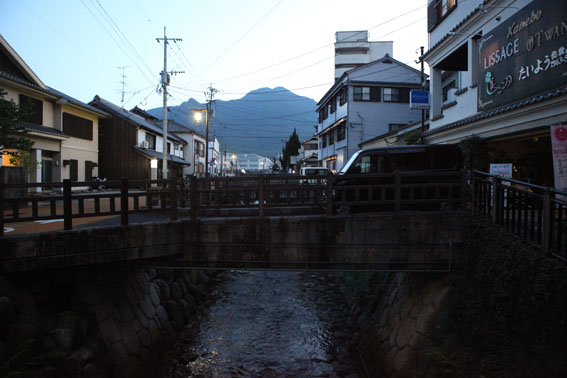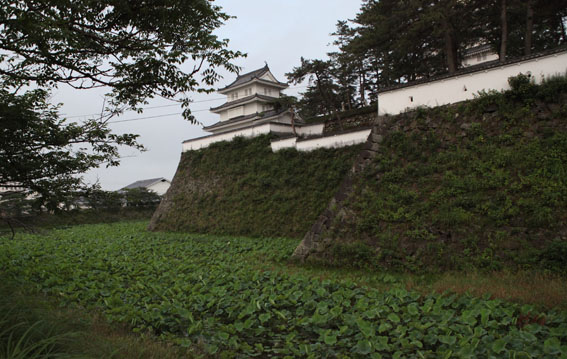Shimabara today is a pretty place with hot spring bathing houses, streams of running spring water all around town, a castle with infamous history of the Shimabara Rebellion (1637-8) and a series of well-preserved homes of samurai who worked for the daimyo who occupied the castle. I decided to walk the town to understand the historical context of those who had ruled this land.

Heavy taxes imposed for the costly building of the Shimabara Castle, combined with poverty and famine, and local discontent due to the preceding persecution of Catholic Christians in the area were what caused the rebellion. It resulted in the beheading of 37,000 rebels and sympathisers as well as the ruling daimyo for misruling. Local interpretive boards and pamphlets provide tourists with history of the area with series of names of important rulers and rebels – all men.


Travelling just over an hour south from Shimabara on a local bus, I arrived at Kuchinotsu. Kuchinotsu Port was one of the first modern ports in Japan that accepted foreign traders. From around 1888, karayuki san boarded a ship from this port to go abroad, often as a stowaway hidden in the bottom of a coal export ships. Many travelled to East and South East Asia in places like Singapore, Hong Kong, and Malaya, but they also settled in many other parts of the world such as India, Siberia, Manchuria, South Pacific, Australia and the United States. Today the port services local fishing boats and a ferry that connects Kuchinotsu to Oniike in Amakusa.

It is noteworthy that Kuchinotsu Port is where Manzo Nagano (1855–1923), a local 15 year old boy boarded an British ship bound for Shanghai as a trainee sailor. In 1877 he arrived in New Westminster, British Columbia, and became the first official Japanese immigrant in Canada. The Canadian Mount Manzo Nagano is named in his honour. Although the term karayuki san is generally used for women who went overseas and worked as prostitutes, in so far as the term comes from this district, and it means someone who goes to or has gone overseas (literally it means going to China, but in those days, going to China equated to going abroad), Manzo Nagano can also said to be a karayuki san.

At the mouth of the port was the Kuchinotsu Museum of History and Folklore & Marine Museum, which had a significant section dedicated to information about the karayuki san with displays of their belongings such as a suitcase, contracts signed with traffickers of the trade, historical photographs and a video display of a modern-day documentary on their plight.
After spending most of the day understanding the history of the area through efforts of local men, I was glad to see that finally in this museum was acknowledgement of the contribution made by countless women who left this port to support themselves and in many cases, the livelihood of their impoverished families.

Much information was provided about karayuki san in South East Asia, but I could not find any information about those who lived and worked in Australia. I thought of Okin. I thought of the many graves of Japanese women in Japanese Cemeteries in Broome, Thursday Island and Cowra. I thought of other women who had made Australia their home: of the war brides that married Australian servicemen, of the young working holiday women who have found husbands in Australia… and of myself.

 Add to favorites
Add to favorites
You write so interesting . It’s wonderful to read your stories.
Thank you Joy ? I am a Japanese born woman living in Australia, and so found Shimabara Penninsula and the strength of women who went abroad so many years ago, especially those who came to some very remote parts of Australia very inspiring!